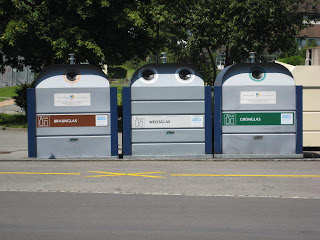More from Meggen
CHURCH & STATE: WHAT’S GOING ON IN MEGGEN
In three weeks of wandering around the village of Meggen, population 6,615, I’ve seen only one dark-skinned person,. He was fishing from the pier down near the boat landing, chattering away in perfect Swiss German, a language heard only in this part of the world, so I presume he’s a local. As far as I can tell, everyone else here is white, well-behaved, and nicely dressed, as was the dark-skinned fellow, of course, and none are overweight.
The population of Meggen is 6,615; its most notable citizens are James Galway, the Irish flutist, and Marc Rich, the infamous commodities trader who was pardoned by Bill Clinton in the final minutes of his presidency.
Meggen, as you might have guessed, is a tax haven.
I counted 5 churches in this charming village that covers an area of 2.8 square miles: four are Roman Catholic, as are 65% of the residents, and one Protestant church serving the 20% of that faith. As for the rest, according to the last census, 10% say they don’t belong to any organized religion, 2.8% declined to answer, 32 individuals claimed to be Muslim and 3 individuals said they are Jewish.. Strange as it may seem, I’ve already met two of them.
My favorite House of Worship is the Catholic Piuskirche, and its astonishing clock tower. Built in 1966, the church is constructed of pantelic dionysos marble, cut to 28 mm (1.1 inches) thick, set into steel frames. .From the outside it looks like a giant packing case, but seen from the inside the walls glow with outside light by day, and from outside like a lantern with interior lighting at night. As for the clock tower, I just can’t imagine what they were thinking.
***
You have to hand it to the Swiss for their outstanding handling and recycling of garbage. Abiding by the law, I keep five receptacles in my kitchen for various categories, plus a stack of stuff next to the front door, ready to go. They are:
1. Organics, such as egg shells, melon seeds, coffee grounds, string-bean tips, etc.
2. Newspapers, catalogues, writing paper, but not envelopes, which might contain glue.
3. Clear plastic bottles, such as the kind Evian comes in, which they call PET. (I don’t know
what that stands for but will continue my research until I find out.)
4. “Abfalle,” for soft plastic wrappings, paper wrapping, yogurt cups, non-transparent milk
containers, tissue paper, envelopes, etc., all of which must be placed in special blue plastic
bags sold specifically for that purpose, at a cost of $17 for ten bags, at the supermarket.
5. Glass, which is then separated by green, clear, brown. The receptacle for these has
separate openings for each color. So far, I’ve located three glass-bottle depositories in the
village: on the main road near a bus stop, on a street near the lake, and another near the old
train station, which is the main trash depository for the village. This village “dump” is open on
Monday, Wednesday, and Friday afternoons, and Tuesday and Thursday mornings only.
6. Cartons, including beer casing, cookie packaging, anything cardboard, which can only be
discarded at the “dump,” near said old train station.
There are four bins near the garage of my building, one for organics, two abfalle, one paper. I don’t know yet where to discard aluminum foil and beer cans. I’ll ask my friends John and Inge, who’ve kindly shown me the ropes regarding proper Swiss garbage disposal. They drove me around Meggen pointing out the depositories, including the “dump,” near the old train station, which is the only place in the village to discard cardboard stuff, also wood, broken glassware, light-bulbs, dead animals, and unwanted articles of all kinds - everything kept in separate containers. Natch!
This is important information. i’m pretty sure there are hefty fines for violations, and when the time comes I plan to get out of town clean and unscathed.
###









0 Comments:
Post a Comment
Subscribe to Post Comments [Atom]
<< Home